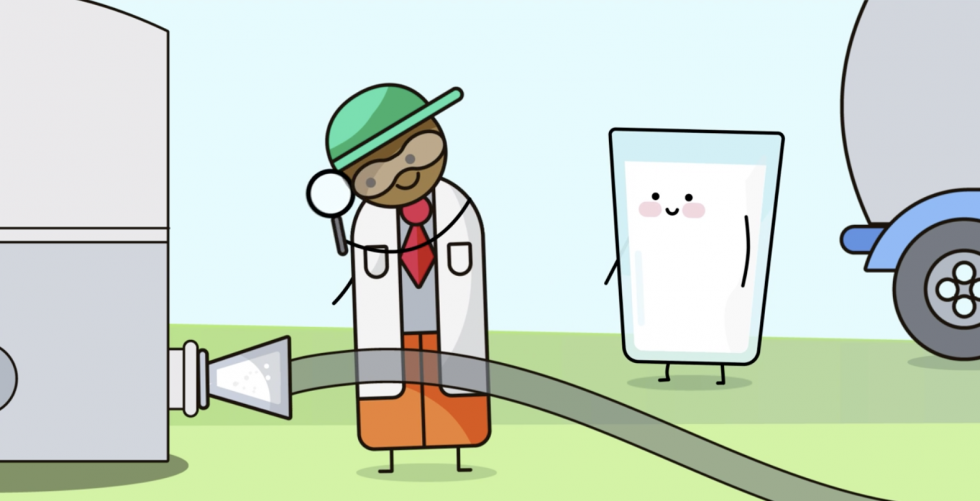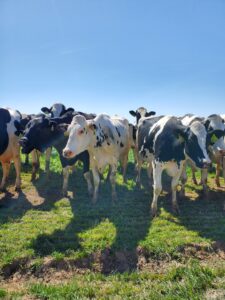When you think of milk safety, you might only be aware of one or two things that happen such as pasteurization. However, there are many pieces in place throughout every part of the process of getting the milk from farm to families. Each piece ensures the milk and dairy products you and your family consume are always safe, delicious and nutritious. In fact, milk is one of the most regulated foods in the United States. From the farm, to transport, to the processing facility and to you, there are measures in place related to sanitizing, cleaning, equipment and storage just to name a few, that help to keep milk safe.
Let’s take a closer look at safety measures at each step of the process.
On the Farm
Keeping milk safe is everyone’s job, whether that is caring for the herd (of cows) to cleaning pens and machines. Life on the dairy farm is all about creating a safe, clean place for the cows and producing a safe dairy product. Cleanliness is a very important part of that.
Whether it is twice or three times daily, the milk barn and equipment get scrubbed and sanitized after each milking is done. Many milking barns also have a water wash after each set of cows are milked.
All the employees that milk the cows wear gloves. They clean the outside of each udder and teat with iodine and strip each teat to check for mastitis before milking.
As the milk gets ready for transport, it is loaded into tanks, which are steam cleaned and sanitized after every load of milk.
Transportation of Milk
Testing is another important part of the process as milk makes its way from the farm to the processing facility. When tankers pick up milk from the farm, it is tested for many things, but mainly antibiotic residue, bacteria and temperature. This ensures great quality and confirms that it is safe.
Milk is transported to the processing plant, in refrigerated tankers at less than 40 degrees Fahrenheit. The temperature-controlled tank not only keeps the milk cold, it protects it from exposure to any contaminants along the way. Every tanker of milk is tested again when it arrives at the processing plant before it is unloaded.
Processing Plant
As we just mentioned, milk is tested again at the processing plant where they follow not only USDA but also FDA regulations for milk and milk products. All of these regulations include components of sanitation and safe handling of milk. All the employees at the processing facility wear gloves, masks, and hairnets.
The milk also goes through pasteurization, and then straight from the processing into new, sterile jugs or containers, depending on that milk’s final destination. Once the milk is packaged, it is stored in refrigerators at 32-38 degrees Fahrenheit until it is shipped. It then makes the last leg of the journey, in a refrigerated truck, to the grocery store, school, food bank, restaurant or other location where it will then be enjoyed by a consumer, like you.
Dairy has been and continues to be safe. This highlights all the practices along the way to keep dairy wholesome and delicious. Each stop along the way is an important part of the dairy journey as milk safely makes its way from the farm to your family’s table.
Want to learn more about the process of milk from the farm to the store? Check it out here with Phil:



